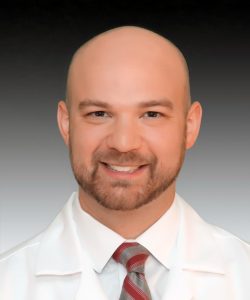The liver is the largest organ in the body. It is found high in the right upper abdomen, behind the ribs. It is a very complex organ and has many functions. They include:
- Storing energy in the form of sugar (glucose)
- Storing vitamins, iron, and other minerals
- Making proteins, including blood clotting factors, to keep the body healthy and help it grow
- Processing worn out red blood cells
- Making bile which is needed for food digestion
- Metabolizing or breaking down many medications and alcohol
- Killing germs that enter the body through the intestine
The liver cells excrete bile into tiny tubes within the liver called bile ducts. These tubes come together like the tiny veins on a leaf. They drain the bile into the common bile duct, a larger single tube leading into the intestine. There the bile aids digestion and gives stool its brown color. As you can see, the liver is a very important organ.
What is Primary Sclerosing Cholangitis (PSC)?
Primary sclerosing cholangitis is a disease primarily of the bile ducts, both inside and outside the liver. The ducts of the gallbladder and pancreas may also be involved. The walls of the bile ducts become inflamed (cholangitis). The inflammation causes scarring and hardening (fibrosis) that narrows the bile ducts. Because bile cannot drain properly through the ducts, it accumulates in the liver causing damage to liver cells. Eventually, so much bile is accumulated, it seeps into the bloodstream. Finally, with long term cell damage, the liver develops cirrhosis (hardening or fibrosis) and it can no longer function properly.
Cause
The exact cause of PSC is unknown. However, the most likely cause appears to be changes in the way the immune system works. When the immune system is working properly, it protects the body from infections caused by foreign invaders like bacteria and viruses. Sometimes, however, it recognizes certain body parts or organs as foreign. The body then goes to war against itself, damaging the body part it thinks is foreign.
PSC often starts between the ages of 30 and 50, and it occurs most often in men. It was once considered a rare disease, but recent studies show it is more common than previously thought. About 70% of the patients with PSC also have an inflammatory bowel disease, especially ulcerative colitis in which the colon becomes inflamed and ulcerated. Medical experts believe genetic factors may link PSC and ulcerative colitis.
Symptoms
PSC usually progresses very slowly. Early on there may be no symptoms. Usually the only findings are abnormal laboratory test results. For example, a liver enzyme called alkaline phosphatase may be above normal ranges in the blood. When symptoms do develop, they may be intermittent or persistent. Gradually, they may worsen. The symptoms are caused by two things: the bile is not being drained properly through the bile ducts, and the liver is not doing its job. Bile ducts can become infected, causing chills, fever and upper abdominal tenderness. Itching may occur when bile seeps into the bloodstream. As the disease progresses, chronic fatigue, loss of appetite, weight loss and jaundice (yellowing of skin and eyes) may occur. Finally, in the advanced stages of cirrhosis, extensive swelling can occur in the abdomen and feet. Liver failure may take many years to develop.
Diagnosis
The physician may suspect PSC from the patient’s medical history, especially a history of inflammatory bowel disease, and from abnormal blood tests. The diagnosis is usually made by cholangiography, either by a procedure called ERCP that involves injecting dye into the bile ducts. Alternatively, an MRI is done to look at the bile ducts. In both of these tests one sees narrowing of the bile ducts.
As the disease progresses, a liver biopsy may be needed to determine how much damage has occurred. Under local anesthesia, a slender needle is inserted through the right lower chest to extract a small piece of liver for microscopic analysis.
Treatment
At the present time there is no cure for PSC, but treatment is available. There are a number of ways to treat symptoms and the various stages of the disease. Itching, from too much bile in the bloodstream, can be controlled with drugs such as Questran. Bile is usually reabsorbed into the bloodstream from the large intestine, and goes back to the liver to be reused. Actigall (Ursodeoxycholic acid) is a drug that favorably changes the make-up of bile in the liver. This, in turn, seems to reduce the amount of liver damage that occurs. Results of medical studies suggest that it may improve the liver blood test but not necessarily long-term survival. Sometimes the bile ducts become infected and must be treated with antibiotics. If ulcerative colitis is also present, it is treated with the appropriate medicines. Swelling of the abdomen and feet, due to fluid retention from cirrhosis, can be treated with a salt-restricted diet and diuretics (fluid pills). Presently, there are exciting studies being done to test the effectiveness of other drugs on the body’s immune system, since this seems to be the underlying problem.
In some cases, endoscopic or surgical procedures may be used to open major blockages in bile ducts. Through an endoscope, the physician places a tiny tube with a balloon on the end into the narrowed bile duct. The balloon is inflated to expand the duct so bile can flow through it once again. Sometimes stents (plastic tubing) can be placed in the narrowed ducts to keep them open. Often PSC progresses to a point where liver transplantation must be considered.
Liver Transplantation
Liver transplantation is now an accepted form of treatment for chronic, severe liver disease. Advances in surgical techniques and the use of new drugs to suppress rejection have improved the success rate of transplantation. The outcome for PSC patients is excellent. Because of the disease’s slow progress, it is possible to plan elective transplant surgery. Survival rates at transplant centers are well over 90 percent, with a good quality of life after recovery.
Summary
Primary sclerosing cholangitis is a slow, progressive disease. Once diagnosed, treatment is directed at managing symptoms and opening narrowed bile ducts. A great deal of research is underway aimed at preventing damage to the bile ducts, improving symptoms and prolonging life. By working closely with the physician, there is good reason to expect a favorable long-term outlook.



